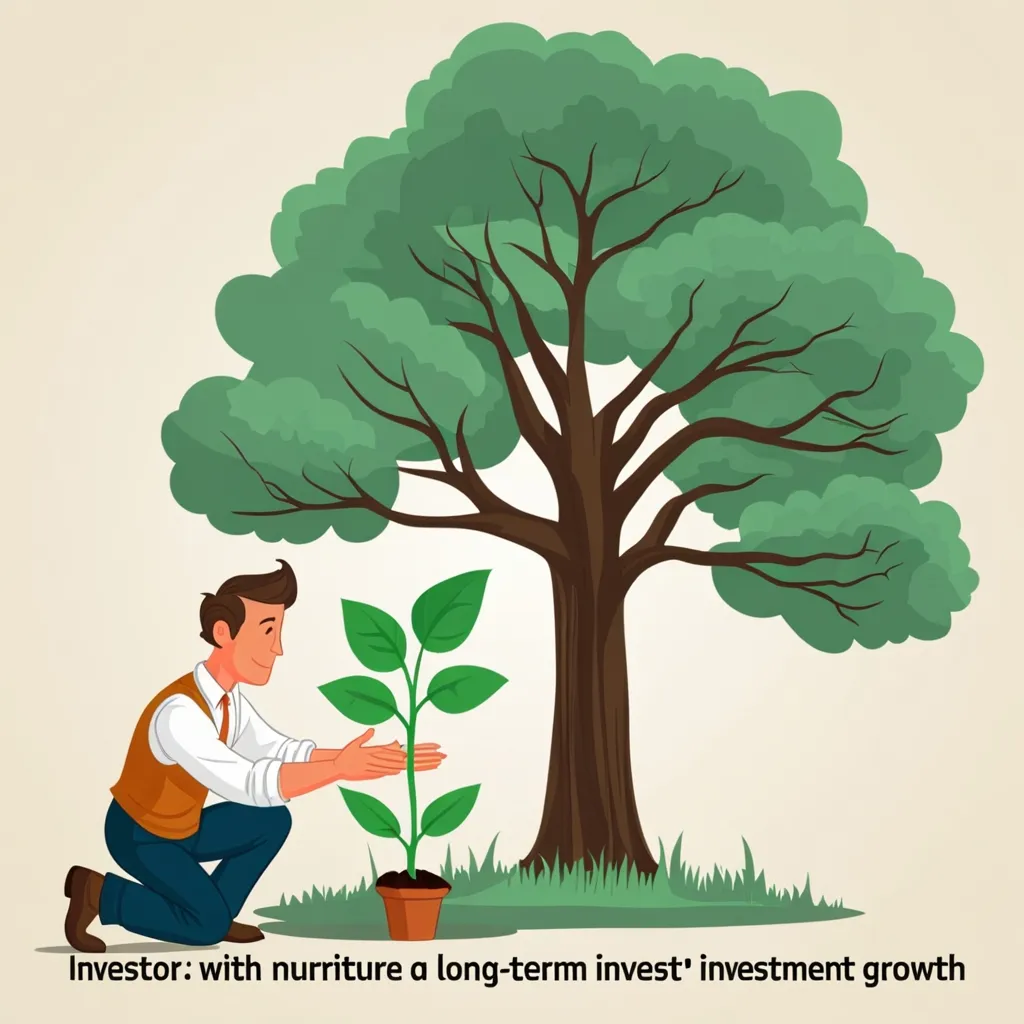When it comes to investing, the allure of dividend growth stocks is hard to ignore. These stocks offer a dual benefit: a steady stream of income and the potential for long-term capital appreciation. As a value investor, identifying undervalued dividend growth stocks requires a meticulous approach, one that delves beyond the surface of high yields and flashy dividend payouts.
The Payout Ratio: A Window to Sustainability
One of the first steps in evaluating a dividend growth stock is to analyze its dividend payout ratio. This ratio tells you how much of the company’s earnings are being distributed as dividends. A payout ratio that is too high can be a red flag, indicating that the company might be over-extending itself and risking its ability to sustain dividend payments in the future. Ideally, you want to see a payout ratio that is manageable, typically below 50% for most industries, though this can vary.
For instance, a company with a payout ratio of 80% might be paying out too much of its earnings, leaving little room for reinvestment or covering unexpected expenses. On the other hand, a company with a payout ratio of 30% is likely in a healthier position, with ample room to increase dividends in the future.
The History of Dividend Increases
Consistency is key when it comes to dividend growth. Companies that have a long history of increasing their dividend payouts are often seen as more reliable. This is because such a track record indicates a commitment to shareholders and a robust financial health that allows for continuous dividend growth.
Look for companies that are part of the elite group known as “dividend aristocrats” – those that have increased their dividends for 25 consecutive years or more. These companies have weathered economic storms and maintained their dividend payments, a testament to their financial resilience.
Free Cash Flow: The Lifeblood of Dividends
Free cash flow is the lifeblood of any dividend-paying company. It represents the cash that is available after a company has paid its expenses, invested in its operations, and met its financial obligations. A company with strong free cash flow generation is better positioned to sustain and grow its dividend payments.
When evaluating a company’s free cash flow, consider not just the absolute numbers but also the trend over time. A company that consistently generates strong free cash flow is more likely to maintain its dividend payments even during economic downturns.
Competitive Advantages: The Backbone of Long-Term Growth
Companies with strong competitive advantages are more likely to sustain their dividend growth over the long term. These advantages could be in the form of brand loyalty, patents, or a dominant market position. Such companies are better equipped to weather competitive pressures and economic fluctuations, ensuring that their dividend payments remain stable.
For example, a company like Coca-Cola, with its iconic brand and global reach, has a significant competitive advantage that supports its long-term dividend growth. Similarly, companies with strong moats, such as those in the pharmaceutical industry with patented drugs, are more likely to maintain their dividend payments.
Dividend Yield as a Valuation Metric
Dividend yield can be a useful metric for valuing dividend growth stocks, but it should be used with caution. A high dividend yield can sometimes be a trap, indicating that the stock price has fallen due to underlying issues rather than an increase in the dividend payout.
Instead of focusing solely on the yield, consider it in conjunction with other metrics such as the price-to-earnings ratio (P/E) and the price-to-book ratio (P/B). A stock with a high dividend yield but a low P/E ratio might be undervalued, presenting a buying opportunity.
Balancing Current Yield and Future Growth
The ideal dividend growth stock offers a balance between current yield and the potential for future dividend increases. While a high current yield can provide immediate income, it is the potential for future growth that truly adds value to your investment.
Look for companies that have a history of increasing their dividends at a rate that outpaces inflation. This ensures that the real value of your dividend income is preserved over time. For instance, a company that increases its dividend by 5% annually is more attractive than one that offers a higher current yield but no growth in payouts.
Avoiding Dividend Traps
Not all high-yielding stocks are created equal. Some may be dividend traps, where the high yield is a result of a declining stock price rather than an increase in the dividend payout. These stocks can be risky, as the company may be at risk of cutting its dividend payments.
To avoid these traps, look beyond the yield and examine the company’s financial health. Check for signs of financial distress such as high debt levels, declining earnings, or a history of dividend cuts. Companies with strong financials and a history of consistent dividend payments are generally safer bets.
Case Studies: Successful Dividend Growth Investments
There are several case studies that illustrate the success of dividend growth investing. One notable example is Johnson & Johnson, a company that has increased its dividend for over 50 years. Despite economic downturns and industry challenges, Johnson & Johnson has maintained its commitment to shareholders, making it a staple in many dividend growth portfolios.
Another example is Procter & Gamble, which has a similar track record of consistent dividend increases. These companies demonstrate the power of long-term dividend growth and the importance of selecting stocks with strong fundamentals.
Building a Diversified Portfolio
Building a diversified portfolio of dividend growth stocks is crucial for minimizing risk and maximizing returns. This involves spreading your investments across various sectors and industries to ensure that you are not overly exposed to any one particular market segment.
For instance, you might include a mix of consumer staples, healthcare, and industrial stocks in your portfolio. This diversification helps in smoothing out the volatility and ensures that your dividend income remains stable even during economic fluctuations.
The Power of ETFs
Exchange-traded funds (ETFs) can be a powerful tool for dividend growth investors. ETFs like the WisdomTree U.S. Dividend Growth ETF and the Vanguard Dividend Appreciation ETF offer a diversified portfolio of dividend growth stocks, making it easier to gain exposure to this investment strategy without the need to select individual stocks.
These ETFs often track specific indices that focus on dividend growth, ensuring that you get a balanced mix of stocks with strong dividend growth potential. They also provide the benefit of professional management and diversification, which can be particularly useful for investors who are new to dividend growth investing.
Conclusion
Investing in dividend growth stocks is a strategy that requires patience, diligence, and a keen eye for detail. By focusing on the payout ratio, history of dividend increases, free cash flow generation, competitive advantages, and balancing current yield with future growth potential, you can identify undervalued stocks that offer both income and long-term capital appreciation.
Avoiding dividend traps and building a diversified portfolio are also crucial steps in this journey. Whether you choose to invest in individual stocks or through ETFs, the key is to adopt a long-term perspective and stay committed to your strategy.
In the world of investing, there are few strategies as rewarding as dividend growth investing. It offers a unique blend of income and growth, making it an attractive option for investors seeking to build wealth over the long term. By applying the principles outlined here, you can create a portfolio that not only generates steady income but also has the potential to grow significantly over time.






